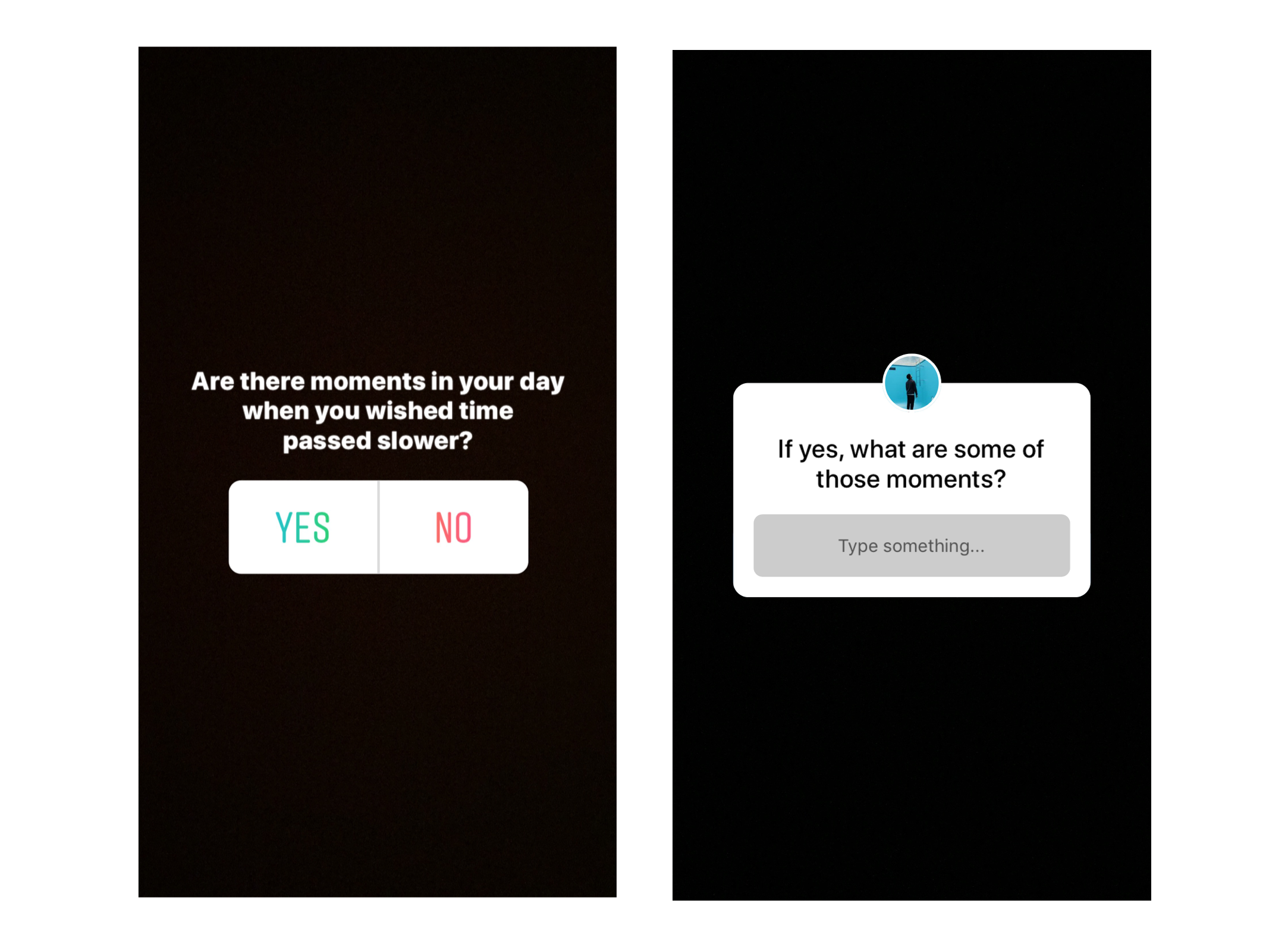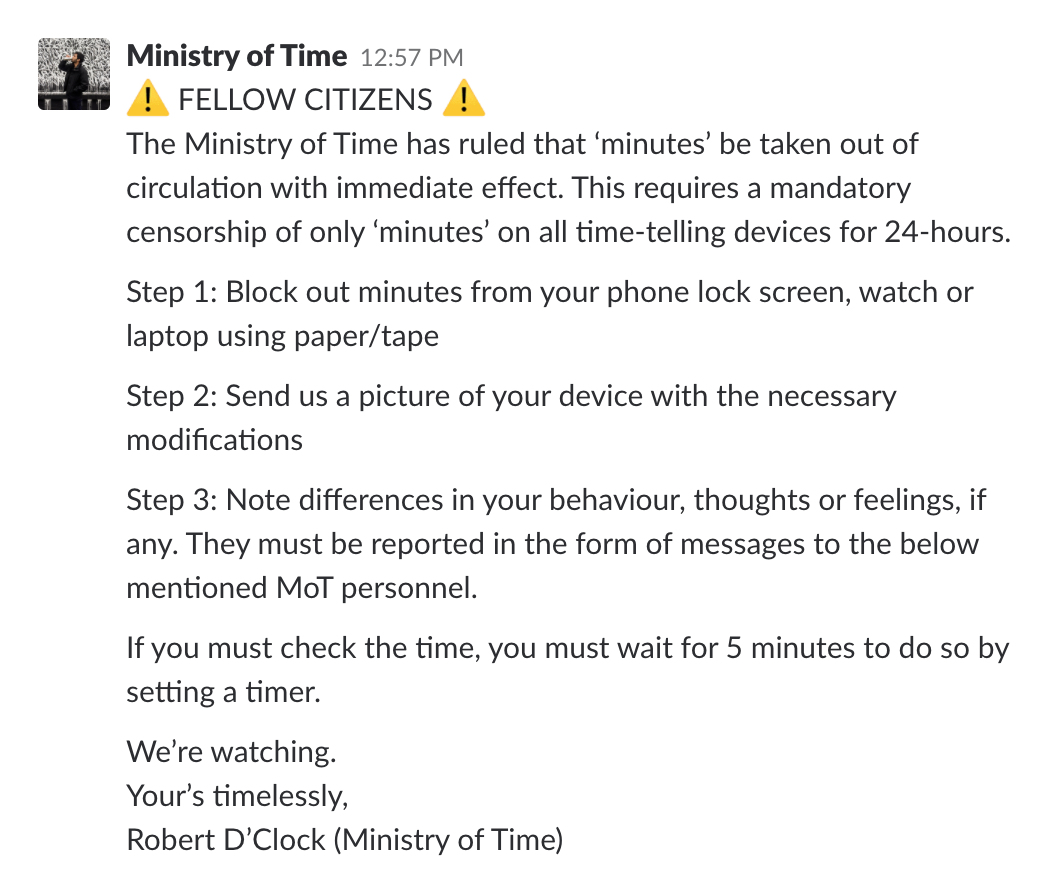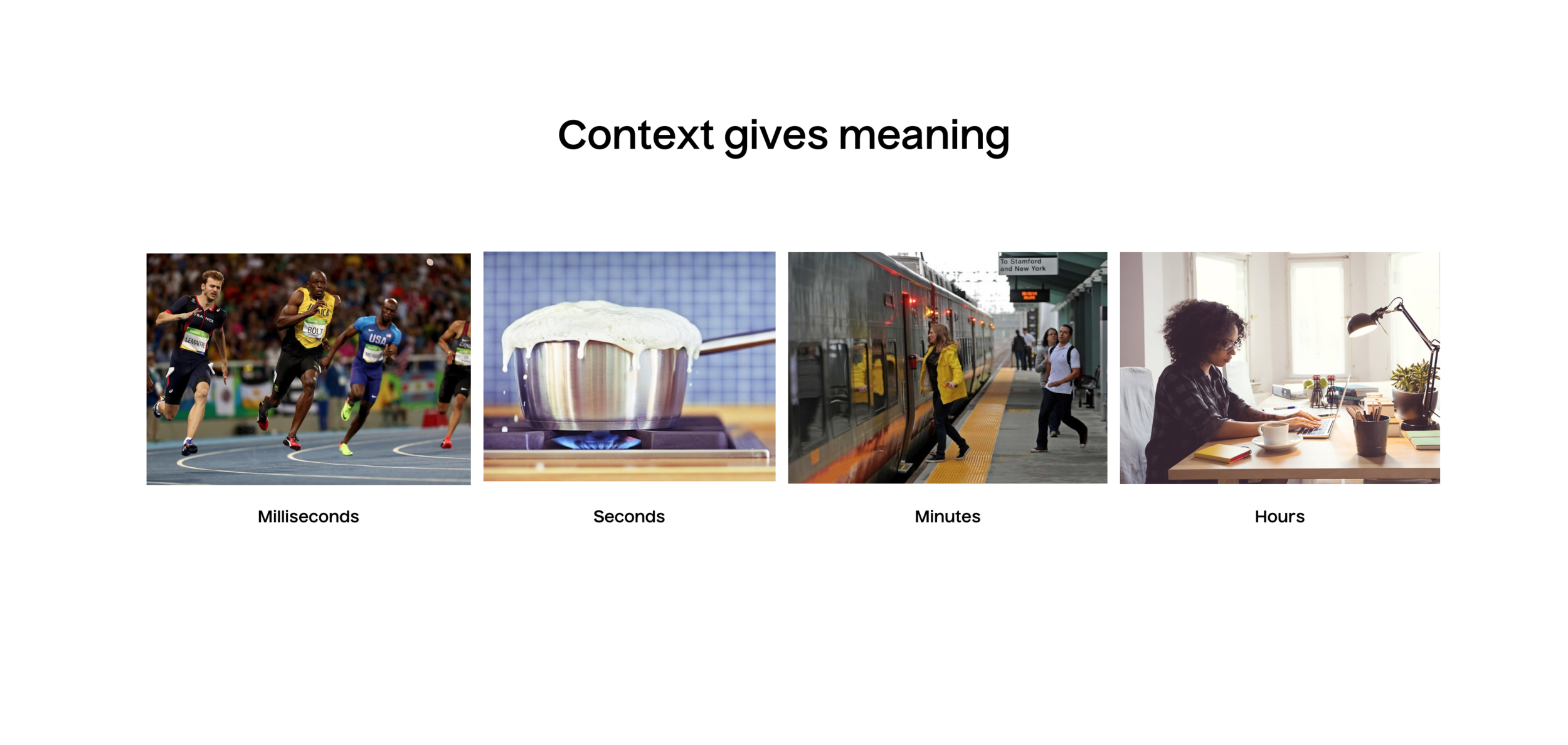Ministry of Time
Time-telling for slow futures
Our association of fast with good dates back to early human existence. Modern life has cemented this relationship in our minds to the extent that it seems ridiculous to question. Simultaneously, there aren't many other inventions that have impacted our existence more than time has. The Ministry questions the dynamic of the long-standing relationship we've shared with this construction of ours.
Is fast always good?
how fast is fast?
We know that time is relative; that we all experience it differently but Einstein gave us a scientific explanation for why. What's more interesting than the science of it is the experience of it- the perception. At one point, planes were worth calling fast. Now we refer to the wifi on the planes as fast. There are ways in which the artefacts have modified our behaviour and how we live. After a quick Instagram survey I chose to explore the perception of time and more specifically the value of slowness.
The value of slowness
The story about the tortoise and the hare is a classic one - slow and steady wins the race. But slow not only speaks for consistency. Slow also means we can improve our chances of being correct. It’s an opportunity to engage our senses in an intimate way and immerse ourselves in a state of flow. My conversations with Angelica and Paolo, made me realise that slow is not just about our actions but about nurturing a sensitiviy towards the world around us. What could slowness bring to our daily interactions?
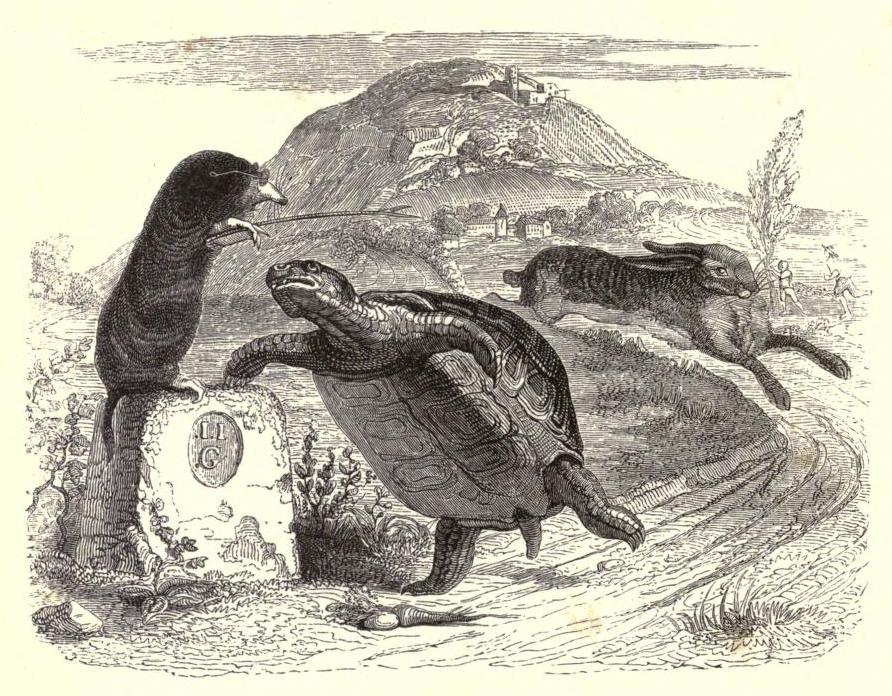
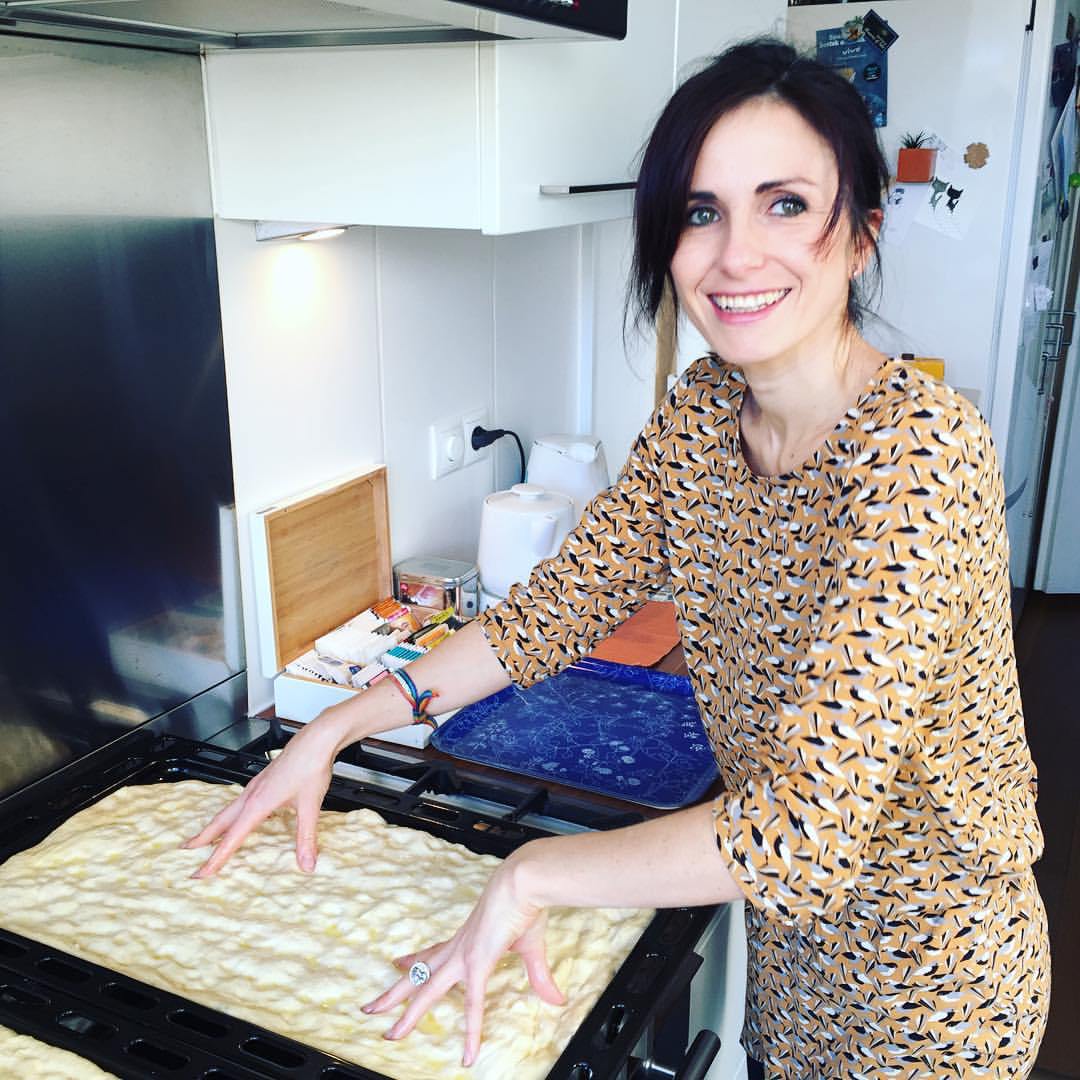

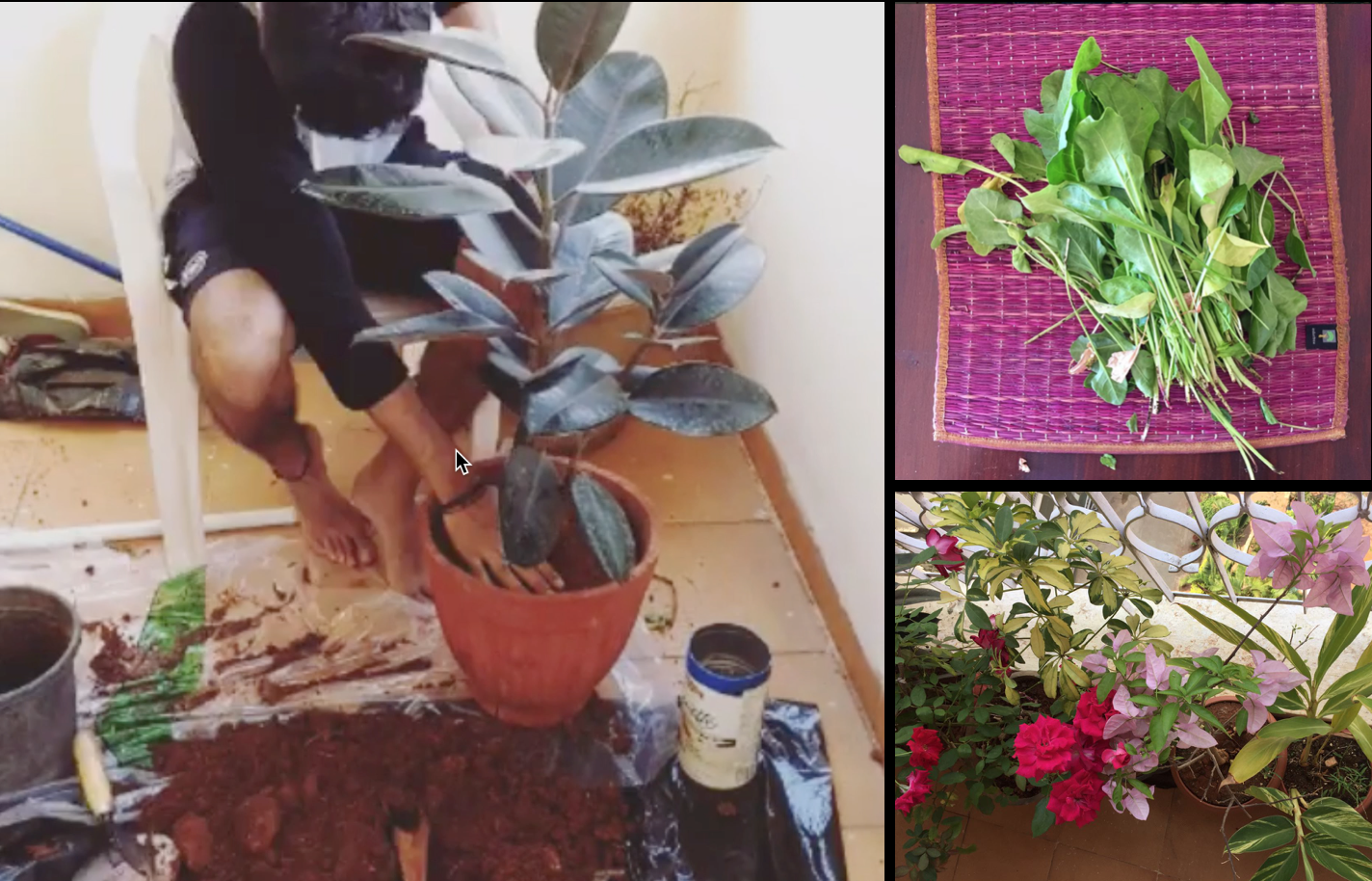
what if you could slow down time?
If we invented time, can we play with it?
“What would a day without minutes feel like?”
The experiment challenged 30 people across 4 different continents under the guise of an Orwellian 1984-ish fictional organisation called the Ministry of Time to censor minutes from their lives.
The results of this exercise were documented in the form of personal stories and reflections They can be found here

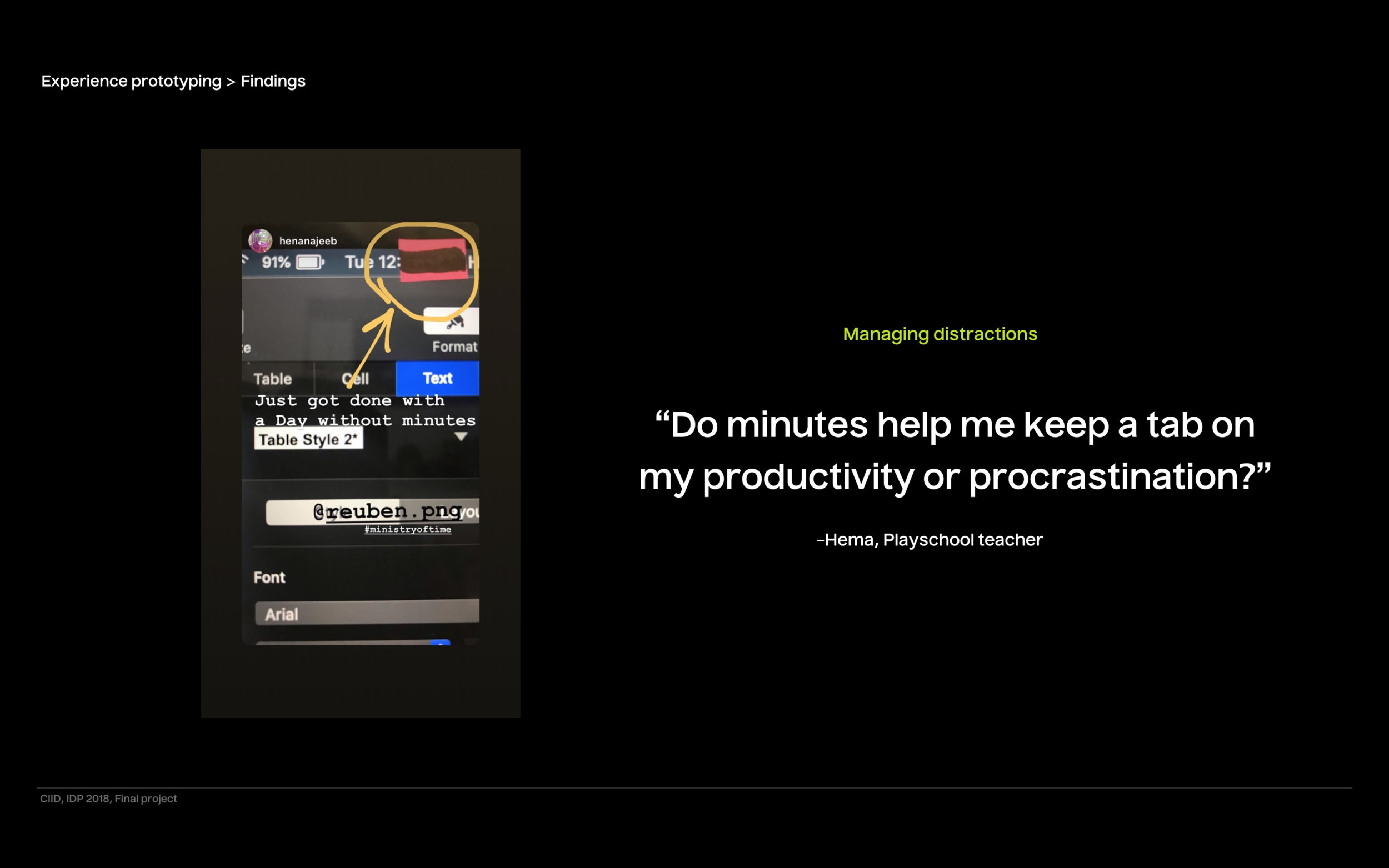

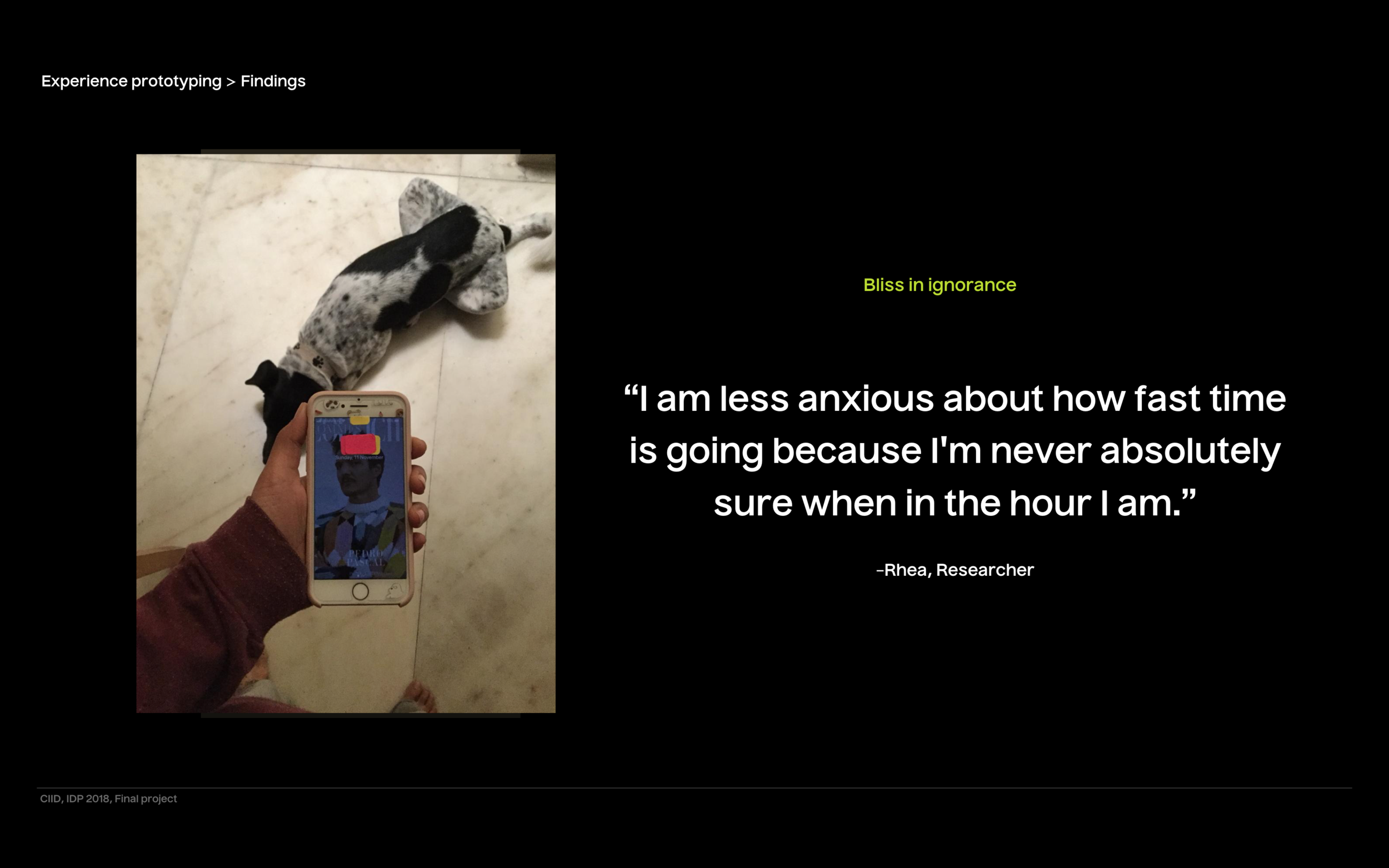
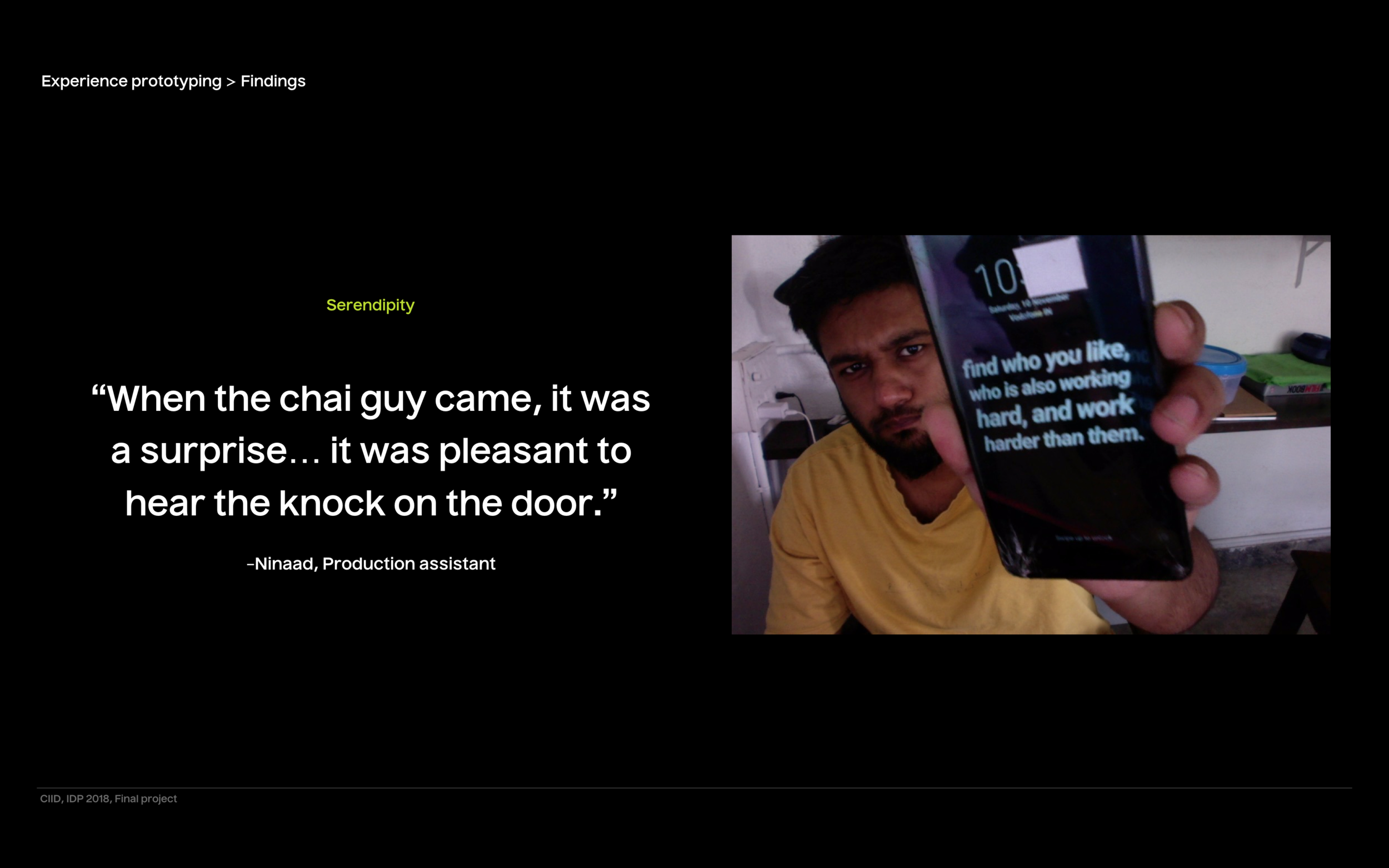
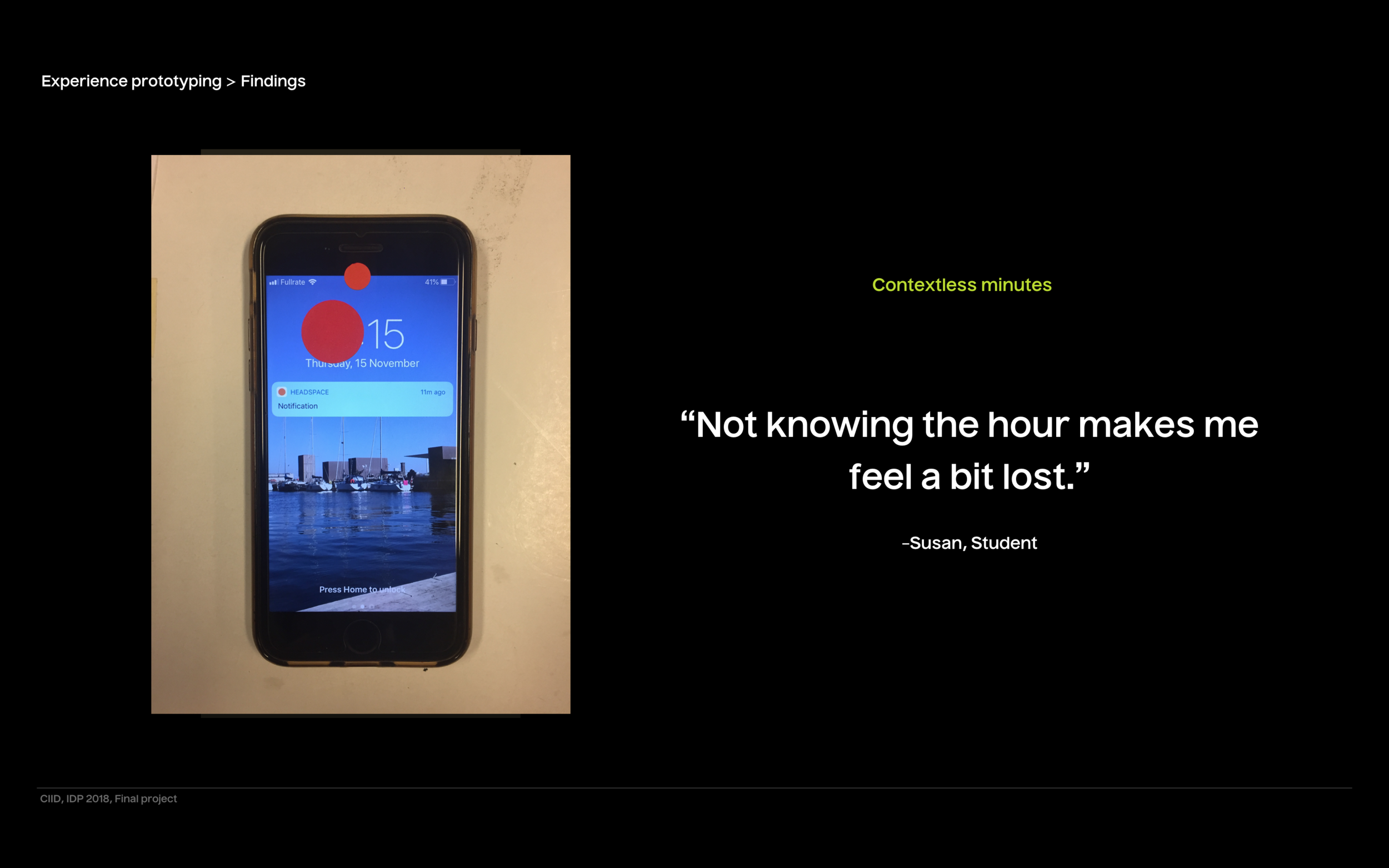

Two time-telling devices that explore control
The Ministry of Time presents two time-telling devices that prompt us to have an alternate perception of time by providing humans with more control. The complete project blog can be found here
[A] The Hour Minute clock
We always experience time as HH:MM but rarely do we question the effect that each unit can have on our behaviour and perception. The Hour Minute clock adds a layer of interaction between these two units of time to make us think about how we would like to experience it. Minutes without hours or hours without minutes. By flipping the clock, like an hourglass, we choose to experience only as much ‘time’ as we need - not a unit more.



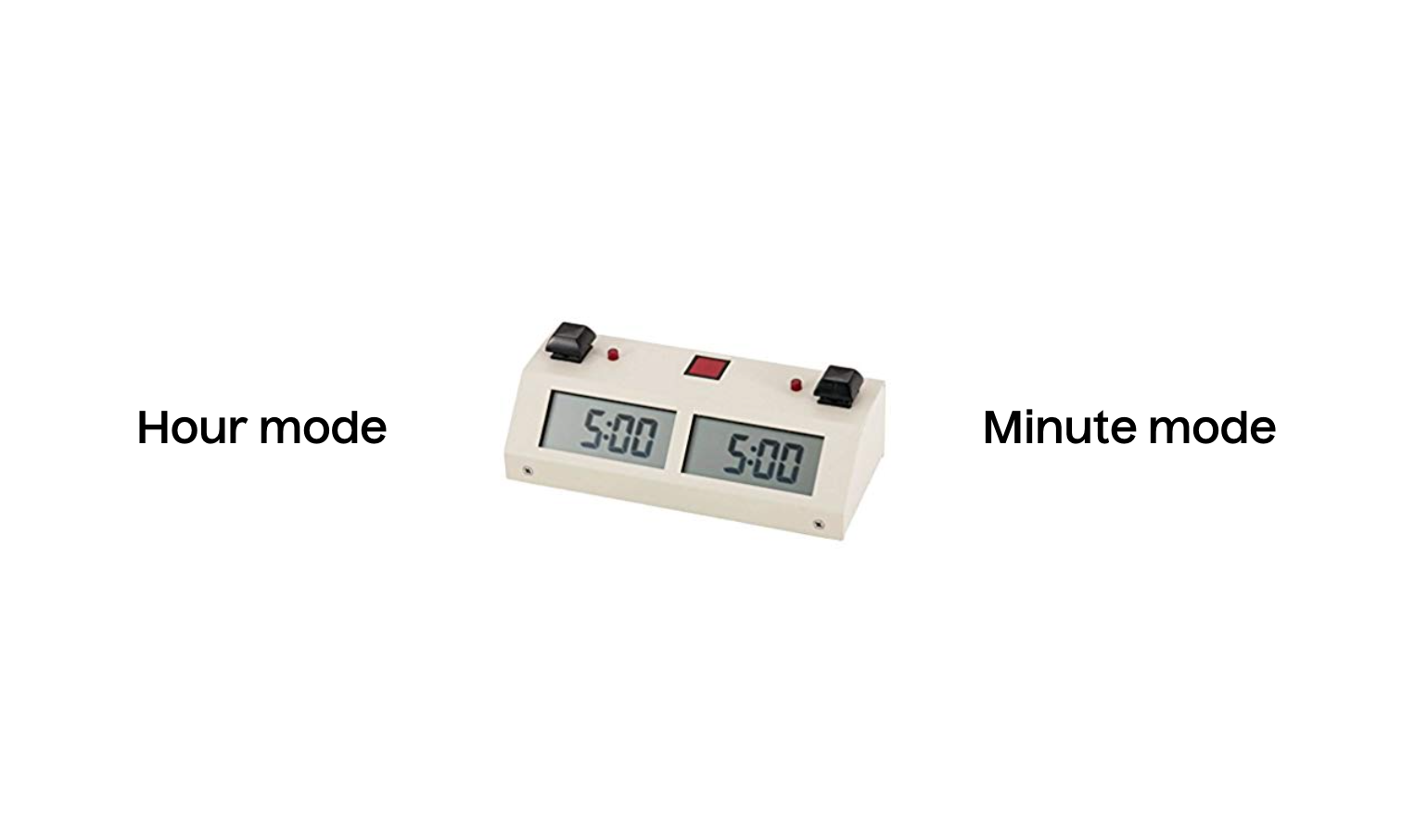
[B] The Sliding clock
Time is usually something we see or read. But what would it mean to interact with it physically? The sliding clock aims to bring an embodied tangible experience to something as shapeless and abstract as time. By stretching the units apart, one can access different units of time depending on how far apart you pull the digits. When the units are closest, they display seconds. As they are pulled apart it snaps to minutes and pulling them even further reveals the hour. The vibration feedback adds a haptic sense to the experience. The space between the digits affects the time we are presented.




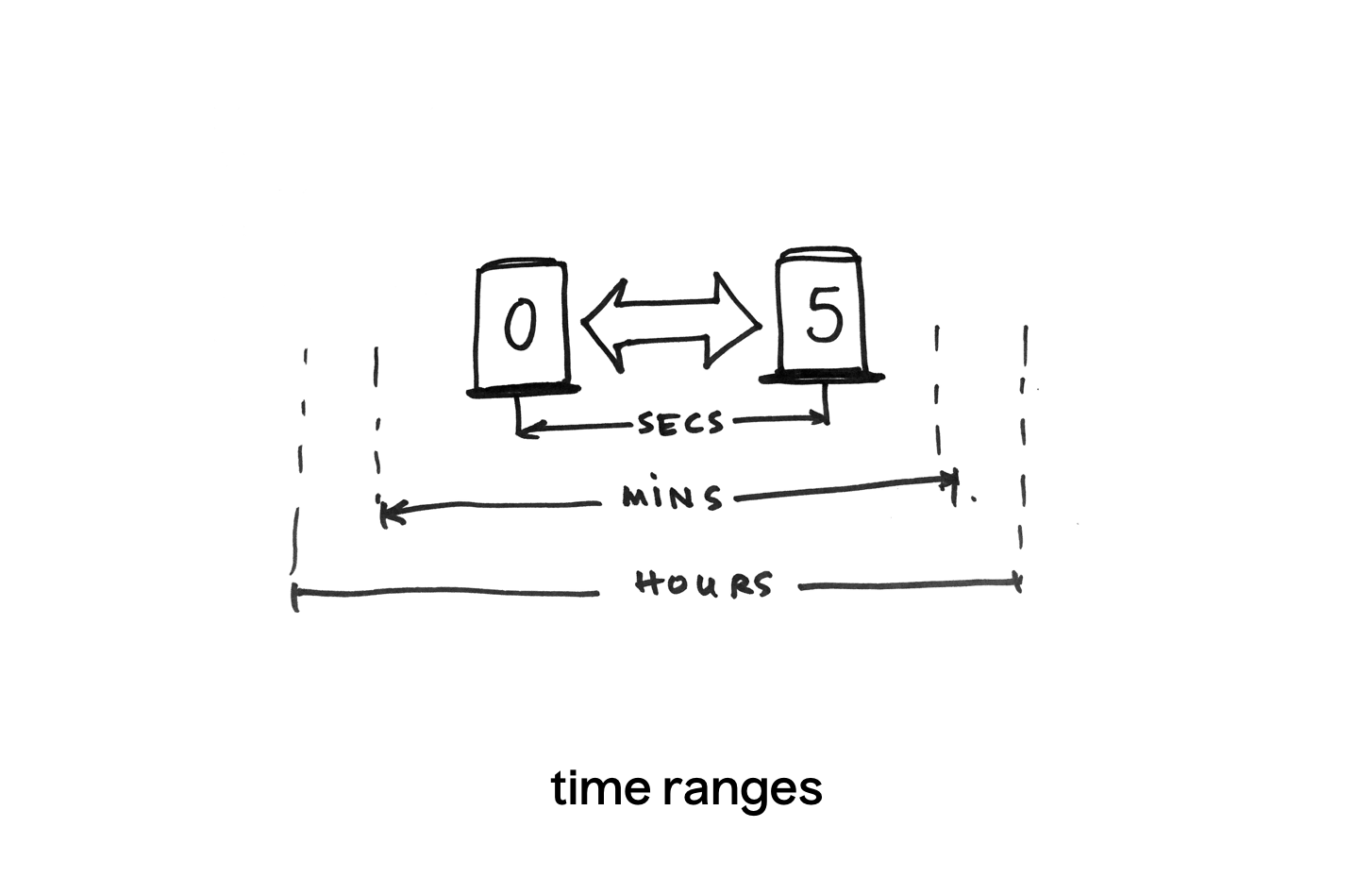
We can have more control over time than think
“The computer’s incredibly fast, accurate and stupid while humans are unbelievably slow, inaccurate and brilliant. ”
curiosity, intuition, vulnerability, tactility
Through a collection of experimental time-telling devices, The Ministry offers experiences that stimulate our 'sense-abilities'; experiences that urge us to be deliberate about our engagement with time. Can these experiments make us reflect on a future rhythm of living that’s sustainable and shape how we view our relationship with emerging technology?
This was my final 10-week project at Copenhagen Institute of Interaction Design (CIID). Guide: Manu Dixit, Thank you to IDP 2018 and all those who helped me in the process.



